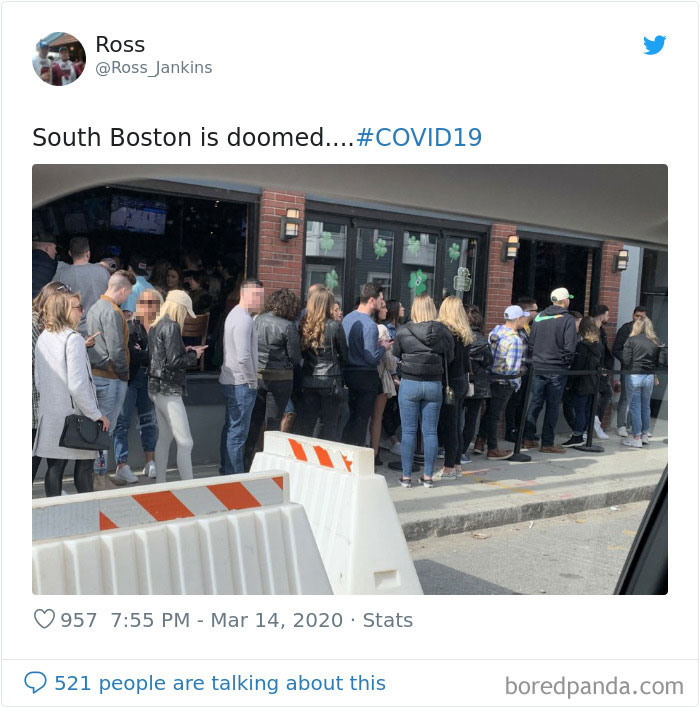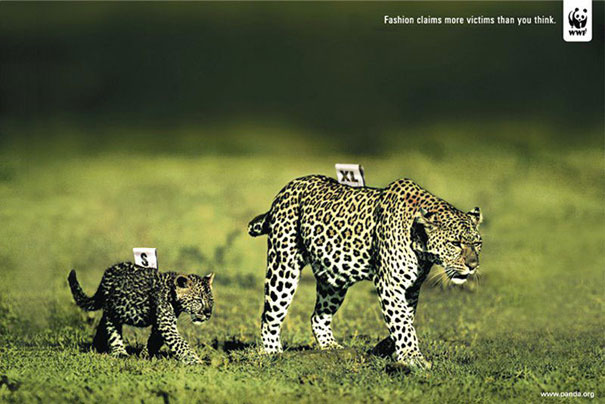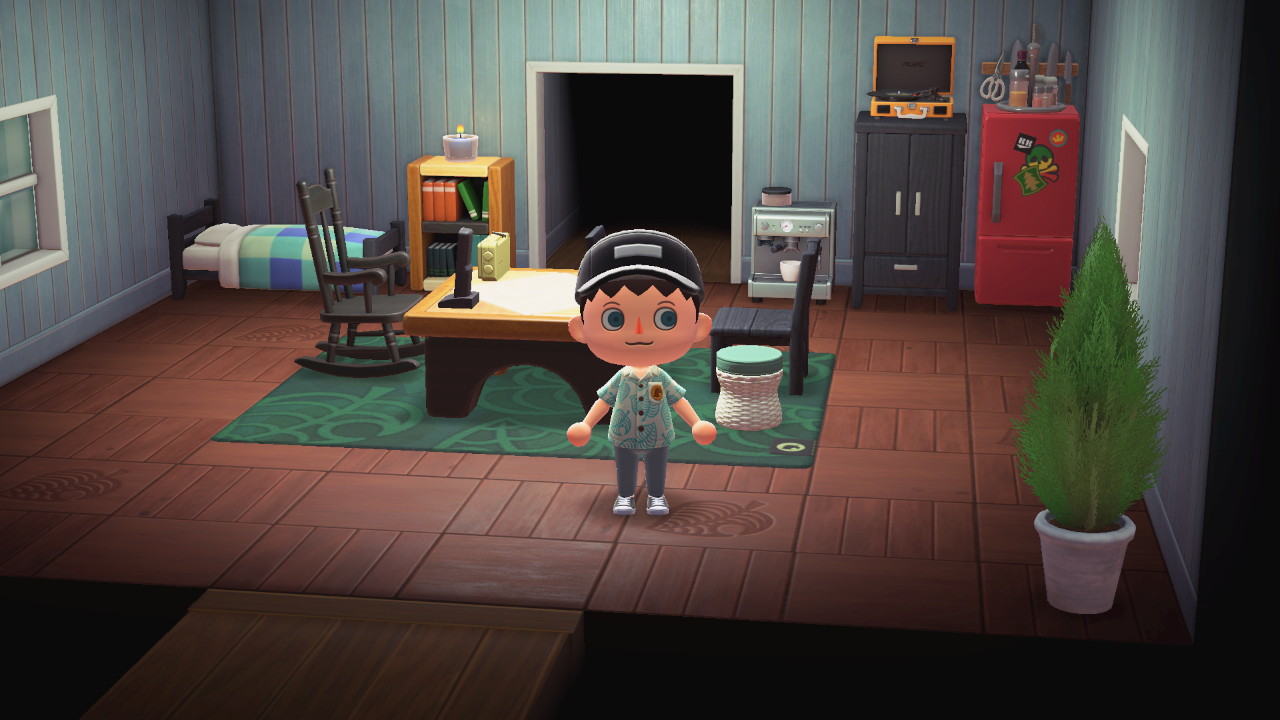The COVID-19 pandemic has impacted the mental health of people around the world. In late March, an elegant four-year-old tiger named Nadia, at the Bronx Zoo, developed a dry cough and lost her appetite. The zoo had been closed for eleven days because of the coronavirus pandemic, and no employee had symptoms of the new coronavirus sweeping across New York.
Out of an abundance of caution, the veterinary staff tested Nadia in April, as her problems persisted. The zoo had to anesthetize the two-hundred-pound cat and take samples from her nose, throat, and respiratory tract, then ship them off to veterinary labs at Cornell University and the University of Illinois. Malayan tigers are among the world's most endangered animals; with fewer than two hundred and fifty left in the wild, they are threatened with extinction because of human poaching and loss of habitat. Nadia was born at the Bronx Zoo, as part of its Malayan-tiger breeding program. By the end of April, seven other big cats—four more tigers, in addition to three lions who live in a separate exhibit—also tested positive, through samples of their feces. The zoo concluded that they had all been exposed to a human, probably a zoo employee, who was asymptomatic.
The news about Nadia stunned staff at more than two hundred accredited U.S. zoos (not including animal "exhibitors," like Joe Exotic, of "Tiger King" fame) and more than ten thousand zoos around the world. Although the mental health of medical staff as a result of COVID has not been commonly talked about, the findings of author Woon et al. reveal just how drastically things have changed in a couple of months. His study conducted on 399 participants from two universities suggest that the prevalence rates of anxiety post COVID were about 31.6%. Even so, "participants with moderate to extremely severe anxiety made up 25.8% of the sample".
The results concluded that individuals who worked during the COVID-19 pandemic reported higher rates of anxiety. As research supports, healthcare workers may experience a significant amount of psychological distress as a result of COVID-19 due to providing direct patient care. In addition, according to a study conducted by three doctors from Texas, "41.5% of respondents had significantly more anxiety than providers who did not care directly for patients''. Even still, the effects of COVID-19 on healthcare providers is very evident when evaluating symptoms of anxiety. As a result of COVID-19, anxiety in healthcare workers has been on the rise.
Anxiety is a big part of mental health and it directly correlates with how workers' perform in healthcare. Since the peak of COVID-19, many studies have been conducted to answer the question of just how much COVID has affected the mental health of individuals in health care. A study done by Di Mattei et al. revealed that 12.63% of COVID nurses and 16.28% of other COVID healthcare workers reported extremely severe anxiety symptoms at the peak of the pandemic. In addition, another study was conducted on 1,448 full time employees in Japan.
The participants were surveyed at baseline in March 2020 and then again in May of 2020. The result of the study showed that psychological distress and anxiety had increased more among healthcare workers during the COVID-19 outbreak. Similarly, studies have also shown that following the pandemic, at least one in five healthcare professionals report symptoms of anxiety. Specifically, the aspect of "anxiety was assessed in 12 studies, with a pooled prevalence of 23.2%" following COVID. When considering all 1,448 participants that percentage makes up about 335 people.
Before COVID-19, healthcare workers already had a lot of stressors. They have a difficult time managing their time with such a busy schedule, they have to make sure to provide for their family, they have to deal with unsatisfied patients, as well as already having a difficult job by itself. It is important for health care workers to know how to tackle their stressors because they are more susceptible to medical errors. The physical and emotional burden of working with COVID-19 impacted medical personnel severely by causing higher rates of anxiety, depression, and burnout which eventually lead to poor sleep, poor quality work/empathy towards patients, and even higher suicide rates. School closures also caused anxiety for students with special needs as daily routines are suspended or changed and all therapy or social skills groups also halted. Others who have incorporated their school routines into coping mechanisms for their mental health have had an increase in depression and difficulty in adjusting back into normal routines.
An additional concern has been shown towards children being placed in social isolation due to the pandemic, as rates of child abuse, neglect, and exploitation increased after the Ebola outbreak. The calculations showed that 42.3% were irritable, 41.7% had symptoms of depression, 34.5% struggled with anxiety, and 30.8% had problems with inattention. Many young people also struggled with boredom, fear, and sleep problems.
In an October 2020 global study (Aristovnik et al., 2020), the negative emotions experienced by the students were boredom (45.2%), anxiety (39.8%), frustration (39.1%), anger (25.9%), hopelessness (18.8%), and shame (10.0%). The highest levels of anxiety were found in South America (65.7%) and Oceania (64.4%), followed by North America (55.8%) and Europe (48.7%). The least anxious were students from Africa (38.1%) and Asia (32.7%). A similar order of continents was found for frustration as the second-most devastating emotion. It focused on building a psychological intervention medical team to provide online courses for medical staff, a psychological assistance hotline team, and psychological interventions. Online mental health education and counselling services were created for social media platforms such as WeChat, Weibo, and TikTok that were widely used by medical staff and the public.
Printed books about mental health and COVID-19 were republished online with free electronic copies available through the Chinese Association for Mental Health. Due to the increase in telecommunication for medical and mental health appointments, the United States government loosened the Health Insurance Portability and Accountability Act through a limited waiver. This allows clinicians to evaluate and treat individuals though video chatting services that were not previously compliant, allowing for patients to socially distance and receive care. On October 5, 2020, President Donald Trump issued an executive order to address the mental and behavioral health consequences of the COVID-19 pandemic and its mitigation, including the establishment of a Coronavirus Mental Health Working Group. On 9 November 2020, a peer-reviewed paper published in Lancet Psychiatry reported findings from an electronic health record network cohort study using data from nearly 70 million individuals, including 62,354 who had a diagnosis of COVID-19.
Nearly 20% of COVID-19 survivors were diagnosed with a psychiatric condition between 14 and 90 days after diagnosis with COVID-19, including 5.8% first-time psychiatric diagnoses. Among all patients without previous psychiatric history, patients hospitalized for COVID-19 also had increased incidence of a first psychiatric diagnosis compared to other health events analyzed. Together, these findings suggest that those with COVID-19 may be more susceptible to psychiatric sequelae of COVID-19, and those with pre-existing psychiatric conditions may be at increased risk for SARS-CoV-2 infection and COVID-19. From staging funerals to informing random strangers their pants are down. Also on bored panda turns out joe biden s dog major will be the first shelter dog to live in the white house in history 50 funny examples of cat beds and cat logic 40 times parents taught their kids lessons but it got them unexpected results. At Lanai Cat Sanctuary, we have 575 cats at the moment and care costs are slightly less than that annual average for owned cats--but they are similar.
Each cat has a name, a microchip, a health record and sees a veterinarian, and all of the cats need love, quality food, water and shelter. And they need a team of daily caregivers who are continually trained in animal health and care. A successful sanctuary needs to budget for experienced leadership to run the organization.
That means someone with nonprofit leadership expertise who's great with the public, staff and can also fundraise. Someone who can ensure responsible use of donations that helps the greatest number of animals, and who has the strategic planning skills to move the mission forward. What Wilcock proposed was that humans are "occupational beings" and that purposeful activity in "occupations" differentiates humans from other lifeforms. There are 24 hours in a day, and we fill this time with a balance of work, self-care and leisure.
When we are unable to engage in occupations, the body experiences stress. The model has been applied to maladaptive behaviours such as self-harm in prisoners (Molineux & Whiteford, 1999) and asylum seekers (Crawford, Turpin, Nayar, Steel, & Durand, 2016). Occupation has been viewed as a human right and the scientific model of occupational deprivation has such status that in 2016 the professional body OT Australia issued a position statement . It aspires to create a fair and inclusive society where all people can "participate" in occupation . While the statement mentions a number of at-risk groups such as those incarcerated, marginalised, refugees and asylum seekers, the fundamental theory has application to the recent COVID19 lock down.
What was articulated as "boredom" and "frustration" was born out of the inability to engage in one's normal occupations such as playing sport, travelling, working and socialising. The whole notion of social distancing and quarantine isolation provides an environment that is not conducive to occupational engagement. We were literally starved of our normal patterns of occupation, and while some sought out ways to correct this imbalance , others possibly became angry, frustrated, sad, miserable and depressed. Being forced to go into lock down provided a similar mental paradigm experienced by prisoners and asylum seekers.
We lost contact with much of our normal routines and occupations and had not prepared to fill the vacuum. By the time the prime minister was recommending jig - saw puzzles, it was too late. Suicide cases have remained constant or decreased since the outbreak of the COVID-19 pandemic, although the best-quality evidence on this subject is often delayed. According to a study done on twenty-one high and upper-middle-income countries in April–July 2020, the number of suicides has remained static.
Despite this, there has been an increase in isolation, fear, stigma, abuse, and economic fallout as a result of COVID-19. Self-reported levels of depression, anxiety, and suicidal thoughts were elevated during the initial stay-at-home periods, according to empirical evidence from several countries, but this does not appear to have translated into an increase in suicides. Apart from anxiety, higher levels of depression and burnout have been seen in healthcare workers as a direct result of COVID-19. In one experiment scientists reported that "more than 28% of the sample reported high levels of emotional exhaustion, except for other non-COVID healthcare workers". In addition more than 50% of the sample reported low levels of depersonalization, except for COVID nurses and physicians, who reported high levels of depersonalization in 36.73% of the cases.
Depersonalization can be defined as a sense of detachment from oneself and one's identity. Taking this into consideration, it is easy to conclude that as a result of COVID-19 the mental health of health care workers has degraded. In addition, when evaluating the results of another study led by Dr. Woon et al., the prevalence rates of depression as a result of COVID-19 were as high as 21.8% and participants with extremely severe depression made up 13.3% of the sample.
They suggested interventions to help with coping with stress in a healthy way, a hotline, and several courses to become educated on how to cope with stress. Health care workers disagreed because they stated that all they needed was uninterrupted rest as well as more supplies. 42.28% of respondents in Ghana proved that their hospitals do not provide sufficient protective equipment. Moreover, medical staff in China did agree to use the psychologists' skills to help them deal with noncompliant and/or emotionally distressed patients. In addition, they also suggested possibly having mental health specialists ready when a patient becomes emotionally distressed.
The COVID-19 pandemic has had considerable impact on students through direct effects of the pandemic, but also through the implementation of stay-at-home orders. Physical harm such as overdose, suicide and substance abuse reached an all-time high. Academic stress, dissatisfaction with the quality of teaching and fear of being infected were associated with higher scores of depression in students. Higher scores of depression were also associated with higher levels of frustration and boredom, inadequate supplies of resources, inadequate information from public health authorities, insufficient financial resources and perceived stigma. Being in a steady relationship and living together with others were associated with lower depressive scores. Research demonstrated that the psychological stress following strict social confinement was moderated by levels of the pre-pandemic stress hormone cortisol and individual abilities of resilient coping.
The stay-at-home orders worsened self-reports of perceived stress but also led to an increase in cognitive abilities like perspective taking and working memory. From the beginning, nurses have always had a stressful job of taking care of patients and juggling long shifts in the hospital. Unfortunately, their hours increased even more during COVID-19, in which many nurses had a huge increase in anxiety. Cases of anxiety and depression within healthcare workers that interact with COVID-19 patients has increased by 1.57% and 1.52% respectively. If untreated, anxiety and depression can lead to more severe mental and physical health outcomes. A researcher, named Labrague, discovered that nurses who work in the frontline are more prone to mental and psychological issues, such as higher rates of anxiety, emotional exhaustion, depression, or post-traumatic stress disorder.
Some nurses had an increase in stress due to treating multiple patients at once or not having enough personal protective equipment. Consequently, they experienced a 1.5 percent increase in anxiety from COVID-19 than before. Bored panda funny comics for kids ~ 55 scary theories shared on reddit that are giving people the creeps. Indeed lately has been sought by users around us, perhaps one of you personally. In 2018, the San Diego Zoo and its sister Safari Park spent more than two hundred million dollars on operations to feed and care for its animals.
The Oregon Zoo budgets more than a quarter million dollars just to care for Chendra, its Asian elephant, for six months. The zoo has an innovative program to save the Oregon silverspot butterfly from extinction. But it costs a hundred and twenty-six thousand dollars for nine months—for a horticulturist to tend to the thousands of violet plants in a greenhouse that provide food for twelve hundred silverspot caterpillars. A human also needs to keep the caterpillars clean, watered, and fed until they become adults and can be released, the zoo's director, Don Moore, told me. "Yes, it's very expensive to feed animals! Zoos also have heavy medical costs, from artificial insemination of endangered pandas to providing medication and surgery for ill or aging animals.
Ashe, the A.Z.A. president, noted that veterinarians provide twenty-four-hour care to the animals at zoo facilities. South Africa implemented a strict stay-at-home order on the 26th of March 2020, which lasted until the 1st of June 2020. People were only allowed to leave their homes to buy food, seek medical help or under extreme circumstances.
Of the 860 respondents to an online questionnaire in May 2020, 46.0% met the diagnostic criteria of anxiety disorder and 47.2% met the diagnostic criteria of depressive disorder. The participants who met these criteria reported substantial daily life repercussions, but less than 20% consulted a formal practitioner. Distress related to containment measures and fear of being infected were associated with more anxiety and depressive symptoms. Having a pre-existing mental health condition, younger age, being female, and living in a non-rural area were also associated with more anxiety and depressive symptoms. From the start, nurses have always had a stressful job of taking care of patients and juggling long shifts in the hospital.
COVID-19 also adds to the complexity of substance use disorders as it disproportionately affects people with SUD due to accumulated social, economic, and health inequities. The health consequences of SUDs and the associated environmental challenges (e.g., housing instability, unemployment, and criminal justice involvement) increase risk for COVID-19. COVID-19 public health mitigation measures (i.e., physical distancing, quarantine and isolation) can exacerbate loneliness, mental health symptoms, withdrawal symptoms and psychological trauma. Confinement rules, unemployment and fiscal austerity measures during and following the pandemic period can affect the illicit drug market and drug use patterns.
Overworked medical staff have taken to social media to send the world one, clear message as they work backbreaking shifts on the frontline of the coronavirus pandemic. The COVID19 pandemic has had many impacts, none more noticeable than the rapid rise in activity such as operatic concertos in Italy, balcony piano performances in Spain and the numerous other seemingly bizarre but somehow intriguing displays of human creativity. My Facebook feed shared images of people mimicking famous paintings which were incredibly clever.
I saw rolls of toilet paper shaped into remarkable sculptures and works of art. More recently I read of a woman who had designed and made a wardrobe of clothing from takeaway packages while in quarantine in a Melbourne hotel. The supermarkets were stripped of baking ingredients, banana bread made a comeback and the sales at Bunnings boomed.
Bored Panda, was in fact an incredibly bored little panda, and people expressed this boredom in many different ways. But Nadia's test result six weeks ago was only the beginning of an unprecedented series of crises—some existential—faced by zoological parks dedicated to the study and survival of thousands of the Earth's other animal species. Unlike entertainment centers, movie theatres, or sports stadiums, zoos can't simply shut their doors or tell staff to work from home. Zoos still have to feed and care for animals—nearly a million, from six thousand species in the United States alone—at a time in which revenues have plummeted to nothing, Dan Ashe, the president of the Association of Zoos and Aquariums, told me. A study was conducted in Europe with sixty-three scheduled arthroplasty patients that had the surgical procedure postponed. They were valued over the phone three times the first week of lockdown, the fourth week, and the end of lockdown.
They were rated based on their pain level with four different questionnaires. The visual analogue scale scores and the Western Ontario and McMaster Universities Arthritis Index scores provided results of increase while the physical activity decreased. There was seen to be a decrease of the physical aspect of the SF-12 scores.



















No comments:
Post a Comment
Note: Only a member of this blog may post a comment.